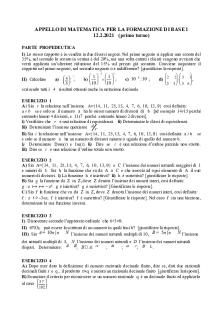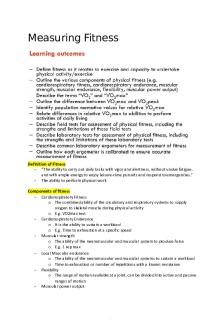Quantization energy lab report er g g g g g g g g g g g g g g g g g g g g g g]\\ PDF
![Quantization energy lab report er g g g g g g g g g g g g g g g g g g g g g g]\\](https://pdfedu.com/img/crop/300x450/og2v1qo08824.jpg)
| Title | Quantization energy lab report er g g g g g g g g g g g g g g g g g g g g g g]\\ |
|---|---|
| Author | Alex Hall |
| Course | Discrete Mathematics |
| Institution | Central Washington University |
| Pages | 5 |
| File Size | 212.1 KB |
| File Type | |
| Total Downloads | 76 |
| Total Views | 201 |
Summary
the the the the the the the the the the the the the the the the the the the the the the the the the the...
Description
Quantization of Energy Lab Report Instructions: For this investigative phenomenon, you will need to determine the composition of the new star using a spectrometer. This will help scientists determine the star's approximate age. You will complete Part I and Part II trials of the experiment. Record your observations and test measurements in the lab report below. You will submit your completed report.
Title: Quantization of Energy, Alex Hall, 10/13/21 Objective(s): -determine the composition and age of stars and unknown elements Hypothesis: I predict that if you can identify an unknown element and composition of stars by using the color it produces when tested. Procedure: Access the virtual lab and complete Part I and Part II trials of the experiment. Because this lab is virtual, summarize the steps in which data were collected for the samples. In addition, list and explain your controlled variables, independent variable, and dependent variable for this lab. Materials: Quantization of Energy Virtual Lab Variables: Remember, controlled variables are factors that remain the same throughout the experiment. An independent (test) variable changes so that the experimenter can see the effect on other variables. The dependent (outcome) variable will change in response to the test variable. Controlled variables: platinum wire, test tubes, HCI, prism used, flame used Independent variable: the elements Dependent variable: color emitted by the elements, wavelengths shown on spectrum Summary of Steps: Part 1: Flame Tests Steps: 1. Clean the platinum wire by dipping it into the test tube of HCI, and then heating the wire in the hottest part of the flame until no color shows 2. Dip the platinum wire into the test tube containing the element. 3. Heat the wire in the hottest part of the flame until a color is displayed.
4. Record the color. 5. Repeat for all other elements. Part 2: 1. Put element on the light source. 2. Analyze the results using the spectrum. 3. Record the different colors and wavelengths shown on the spectrum. 4. Repeat for all of the elements. Data: Type the results of your tests in the data table below. The saved results of your measurements can also be found by selecting the data table button within the virtual lab. Don't forget to record measurements with accuracy, precision, and appropriate significant figures. Part I: Flame Tests Solution
Element Name
Color Description
Known One
Barium
Red
Known Two
Calcium
Green
Known Three
Sodium
Yellow
Known Four
Rubidum
Purrple
Known Five
Potassium
Blue
Known Six
Lithium
Pink
Unknown One
Lithium
Pink
Unknown Two
Potassium
Blue
Part II: Spectrometry Known Elements Spectrum Line
Hydrogen
Helium
Sodium
Neon
Mercury
1
Purple 410 nm
Blue 445
Yellow 575
Purple
Blue 440 nm
nm
nm
420 nm
Green 510 nm
Yellow 585 nm
Green 510 nm
2
Blue 440 nm
Blue 450 nm
3
Green 510 nm
Yellow 585 nm
4
Green 535 nm
5
Yellow 585 nm
Green 520 nm
Green 530 nm
Red 690 nm
Green 525 nm
Green 550 nm
Yellow 550 nm Red 730 nm
Yellow
Red 570 nm
575 nm 6
Yellow 575 nm
Yellow 580 nm
Red 675 nm
7
Red 660 nm
Red 700 nm
Red 690 nm
8
Red 680 nm
Red 710 nm
Red 710 nm
9
Red 700 nm
Red 720 nm
10
Red 745 nm
Star Composition Line in Star!Spectrum
Color
Wavelength
1
Purple
405
2
Purple
410
3
Purple
415
4
Blue
435
5
Blue
445
6
Green
500
7
Green
505
8
Green
550
9
Green
560
10
Yellow
585
11
Red
620
12
Red
625
13
Red
655
14
Red
685
15
Red
690
16
Red
695
17
Red
705
18
Red
715
19
Red
725
Conclusion Write a conclusion statement that addresses the following questions: •
Based on your data, which unknown elements make up this star?
The unknown elements are potassium and lithium. •
Do your data support or fails to support your hypothesis (include examples)?
My data supports my hypothesis because each element has specific colors and wavelengths that correspond to that element. Therefore, if you can use that to identify the element, you can use that info to determine the age of a star. For example, Lithium produces a red color when put to the fire test. •
How do you think the investigation can be explored further?
I believe we can explore this investigation further if we decided to test out different elements to get their specific colors and wavelengths. Post-Lab Reflection Questions Answer the reflection questions using what you have learned from the lesson and your experimental data. It will be helpful to refer to your chemistry journal notes. Answer questions in complete sentences. 1. In Parts I and II of the lab, what happened to the electrons of each element to produce the different colors of light? Explain your answers using important terms from the lesson and information provided in the laboratory. Because heat was added, the electrons absorbed the light, and therefore move into the excited state. Once the electron starts to fall back to a lower orbit, away from the nucleus, it emits light. The wavelength is the factor that determines the type of light (we view this through the prism).
2. Stars composed of heavier (more massive) elements are often slightly older than stars made predominantly from hydrogen and helium. Based on your data, is the newly discovered star a younger star? Explain your answer. The newly discovered star is heavier and therefore older, because it isn’t made up of the lighter hydrogen and helium, instead it is made up of lithium and potassium, which are heavier elements. Based on the data in the experiment and the ques>on, the star is an older star....
Similar Free PDFs

Assignment 1 - g g
- 3 Pages
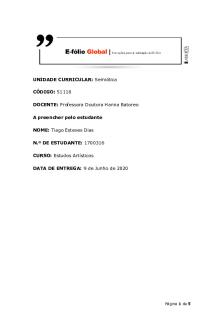
Efolio G
- 5 Pages
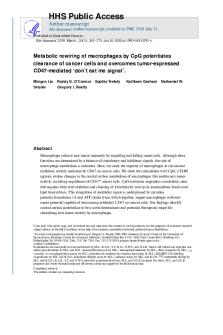
Cp G
- 30 Pages

G Greene
- 4 Pages

G. mikroba
- 15 Pages

Resumen MGA (factor g)
- 4 Pages
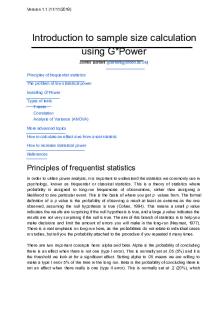
G Power Guide
- 35 Pages

G blatt 6
- 3 Pages

G+ ziarniaki i Enterobacteriaceae
- 22 Pages

Parcial Historia Arg G
- 4 Pages

G-1 - queen sleeze
- 3 Pages
Popular Institutions
- Tinajero National High School - Annex
- Politeknik Caltex Riau
- Yokohama City University
- SGT University
- University of Al-Qadisiyah
- Divine Word College of Vigan
- Techniek College Rotterdam
- Universidade de Santiago
- Universiti Teknologi MARA Cawangan Johor Kampus Pasir Gudang
- Poltekkes Kemenkes Yogyakarta
- Baguio City National High School
- Colegio san marcos
- preparatoria uno
- Centro de Bachillerato Tecnológico Industrial y de Servicios No. 107
- Dalian Maritime University
- Quang Trung Secondary School
- Colegio Tecnológico en Informática
- Corporación Regional de Educación Superior
- Grupo CEDVA
- Dar Al Uloom University
- Centro de Estudios Preuniversitarios de la Universidad Nacional de Ingeniería
- 上智大学
- Aakash International School, Nuna Majara
- San Felipe Neri Catholic School
- Kang Chiao International School - New Taipei City
- Misamis Occidental National High School
- Institución Educativa Escuela Normal Juan Ladrilleros
- Kolehiyo ng Pantukan
- Batanes State College
- Instituto Continental
- Sekolah Menengah Kejuruan Kesehatan Kaltara (Tarakan)
- Colegio de La Inmaculada Concepcion - Cebu
![Quantization energy lab report er g g g g g g g g g g g g g g g g g g g g g g]\\](https://pdfedu.com/img/crop/172x258/og2v1qo08824.jpg)
